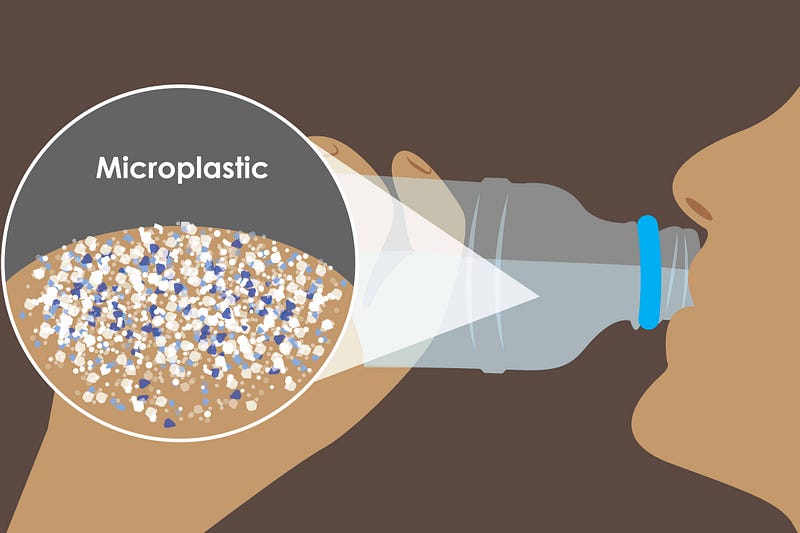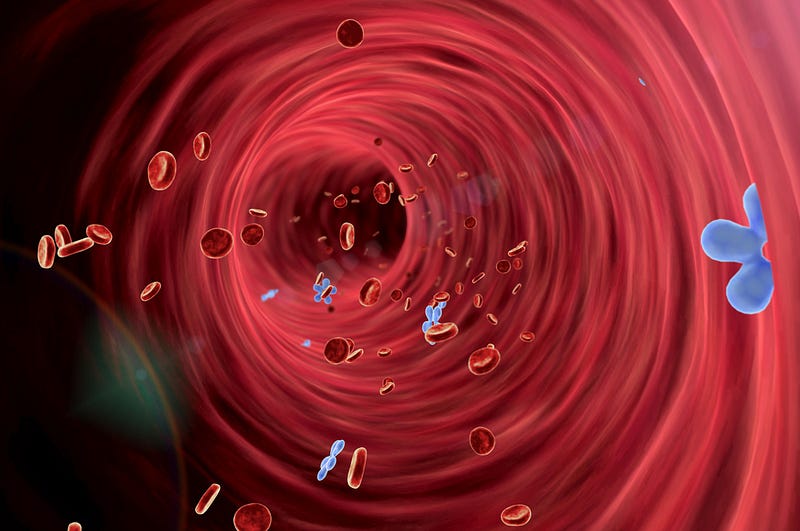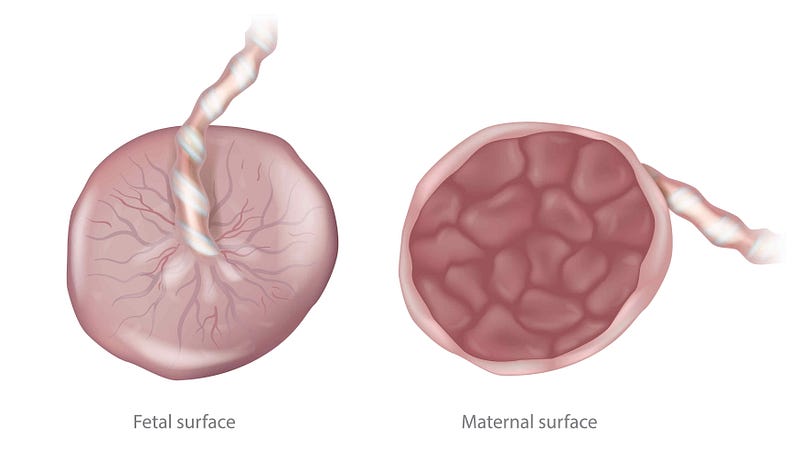The Hidden Crisis: Microplastics Invading Our Bodies
Written on
The Ubiquity of Microplastics
Microplastics are becoming an unavoidable part of our lives, even infiltrating our drinking water. In my publication, "A Guide to a Healthier Planet," I delve into the detrimental effects of microplastics on aquatic life. These tiny plastic particles, which are less than 5 mm in size, originate from improperly discarded plastic items that degrade over time. They can enter the food chain and eventually find their way to our plates, posing threats to human health as we consume them.
As microplastics are not confined to water bodies but are also present in soil, air, and various consumables like beer and sea salt, our exposure is increasing. Current estimates suggest that each person ingests between 39,000 and 52,000 microplastic particles annually, equating to roughly a credit card's worth each week!

Inhalation of these particles further exacerbates the issue. The depth to which microplastics penetrate our lungs depends on their size and density, with smaller particles able to reach deeper areas. The body employs a natural defense mechanism called mucociliary clearance to expel these particles, often leading to their ingestion. Microplastics can also be engulfed by specific white blood cells, entering the bloodstream or lymphatic system.
The Health Implications of Microplastics
As the prevalence of microplastics continues to rise, so do concerns regarding their potential health impacts. These particles may carry toxic substances and can absorb harmful chemicals, leading to inflammation and alterations in gut microbiota—crucial for overall health.
Microplastics have been detected in various human tissues, including:
Blood
Recent studies have revealed the presence of microplastics in blood samples from healthy individuals, with polyethylene terephthalate (PET) being the most frequently found plastic, present in over half the samples. Other types detected include polyamide (PA), polystyrene (PS), polyethylene (PE), and polymethyl methacrylate (PMMA). The health effects of these particles remain uncertain, particularly since their size varies before and after surgical procedures, indicating possible interactions with medications.

Heart
Microplastics have also been identified in different heart tissues. PET was the dominant plastic type found, except in the heart's appendix, where polyurethane (PU) was most prevalent. This discovery raises alarms about the potential for microplastics to disrupt normal heart functions, as they have been shown to affect heart rates in aquatic organisms.
Placenta
Another alarming location for microplastics is the placenta, where they were found on both maternal and fetal sides. Their presence raises questions about their impact on the immune system and fetal health, as they could trigger responses that use energy reserves and potentially weaken defenses against infections.

Breast Milk
Microplastics have also been detected in breast milk, with about 75% of sampled women showing traces of these particles. Given that breast milk is essential for infant nutrition and immune protection, the implications of microplastics in this vital substance warrant thorough investigation.
Testicles and Semen
Microplastics have been identified in male reproductive organs, specifically in testicles and semen. The findings suggest that smaller microplastics accumulate while larger ones are expelled from the body. Research indicates that microplastics could adversely affect sperm quality and reproductive health, although more studies are needed to draw definitive conclusions.

Taking Action Against Microplastics
With the evidence of microplastics in various body parts, it’s crucial to take proactive measures to reduce their prevalence in our lives. Here are some practical steps we can adopt:
- Prevent plastic waste from contaminating the environment.
- Participate in or organize local cleanup efforts.
- Consider "plogging"—picking up waste while jogging.
- Dispose of waste responsibly, avoiding littering.
- Opt for reusable products instead of single-use plastics.
Your suggestions on further actions to combat microplastics are welcomed in the comments!
For more insights, check out my book, "A Guide to A Healthier Planet," where I explore ways to bridge the gap between scientific findings and actionable steps for a sustainable future.
Study finds evidence of microplastics inside human body: This video discusses recent findings about microplastics in human bodies and their health implications.
Microplastic invasion: Oceans, soil and food?: This video delves into the broader impact of microplastics on our ecosystems and food sources.
About the Author
Dr. Erlijn van Genuchten is a recognized expert in environmental sustainability, dedicated to translating scientific insights into practical solutions for a sustainable future. She has inspired many through her book, "A Guide to A Healthier Planet," her YouTube channel Xplore Nature, and her engagements with organizations like the United Nations.